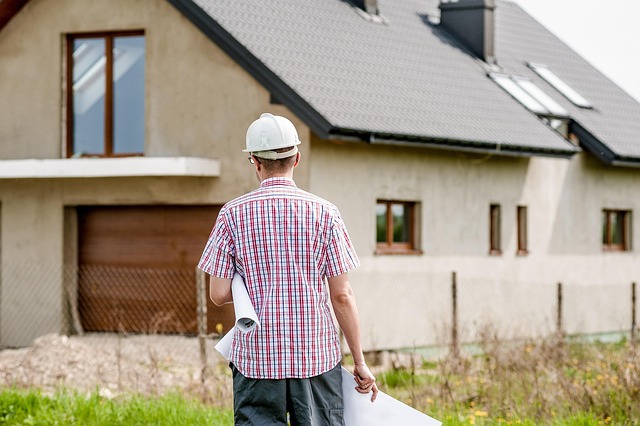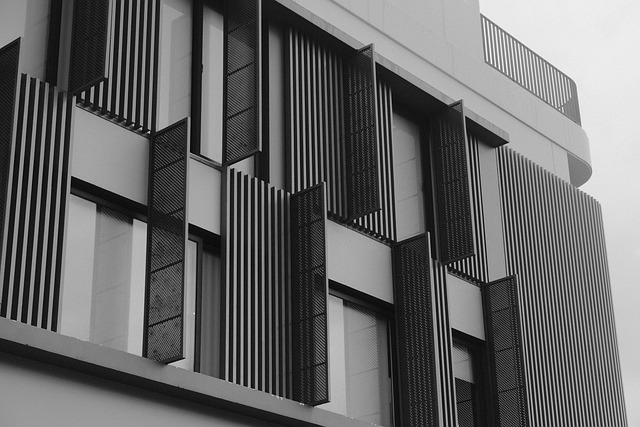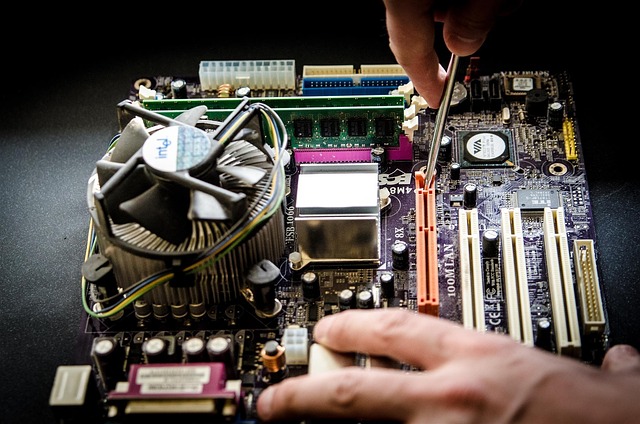Home repair and maintenance for HVAC systems involves understanding interconnected components like furnaces, air handlers, ducts, thermostats, and condensers. Regular care includes filter changes, leak checks, and electrical inspections to prevent failures, save energy costs, and ensure optimal indoor air quality. Homeowners should watch for red flags like unusual noises or high energy bills, perform routine inspections, and promptly address issues to maintain system health and longevity. For specific challenges, professional help is recommended.
“Elevate your home’s comfort and energy efficiency with expert guidance on HVAC maintenance and repair. This comprehensive article delves into the intricacies of understanding and maintaining your heating, ventilation, and air conditioning systems—essential components of modern living. From unraveling complex mechanics to addressing common issues, we equip homeowners with strategies for optimal performance and longevity. Discover effective solutions, enhance energy conservation, and ensure a thriving HVAC system with our expert insights tailored for DIY enthusiasts and those seeking professional home repair and maintenance.”
- Understanding HVAC Systems: Unraveling the Complexities of Home Heating and Cooling
- The Art of Maintenance: Strategies for Optimal Performance and Longevity
- Common Repair Issues and Effective Solutions: A Comprehensive Guide for Homeowners
Understanding HVAC Systems: Unraveling the Complexities of Home Heating and Cooling

Understanding HVAC systems is crucial for anyone looking into home repair and maintenance. These intricate networks combine heating, ventilation, and air conditioning to create a comfortable living environment. At their core, they involve a series of components like furnaces, air handlers, ducts, thermostats, and condensers that work together in a delicate balance. Each part plays a vital role in ensuring efficient energy transfer and indoor air quality.
Homeowners often overlook the complexities involved, leading to potential issues down the line. Regular maintenance is key to preventing these problems. It includes tasks like changing filters, checking for leaks, and inspecting electrical connections. By staying on top of these, homeowners can ensure their HVAC systems operate optimally, providing consistent comfort throughout the year while also saving on energy costs.
The Art of Maintenance: Strategies for Optimal Performance and Longevity

Maintaining a home’s HVAC (Heating, Ventilation, and Air Conditioning) system is an art that requires strategic expertise to ensure optimal performance and longevity. Regular care goes beyond mere cleaning; it involves a comprehensive approach that includes regular inspections, preventative measures, and timely repairs. Homeowners should view HVAC maintenance as a crucial investment, not just an expense. By implementing these strategies, you can extend the lifespan of your system, improve energy efficiency, and avoid costly breakdowns.
Strategic home repair and maintenance practices involve setting a schedule for routine checks, cleaning or replacing air filters, and lubricating moving parts. During inspections, pay close attention to signs of wear and tear, such as unusual noises, inefficient cooling or heating, or strange odors. Addressing these issues promptly can prevent major malfunctions. Remember, the art of maintenance lies in its consistency and adaptability; it’s about recognizing when to tackle small issues before they become significant problems, ensuring your home remains comfortable and energy-efficient throughout all seasons.
Common Repair Issues and Effective Solutions: A Comprehensive Guide for Homeowners

HVAC systems are essential for comfortable living, but they can encounter various issues over time. Common repair problems range from faulty thermostats to malfunctioning compressors and inefficient ductwork. Identifying these issues promptly is crucial for maintaining optimal indoor comfort and energy efficiency. Homeowners should be aware of potential red flags like unusual noises, inadequate heating or cooling, and high energy bills, which may indicate problematic areas needing attention.
Effective solutions involve regular maintenance checks, including cleaning or replacing filters, inspecting ductwork for leaks, and ensuring proper calibration of thermostats. For specific issues, such as a frozen evaporator coil or a broken condensate pump, professional assistance is recommended. Homeowners can contribute to proactive care by scheduling routine inspections and promptly addressing any anomalies. This comprehensive guide equips homeowners with knowledge, enabling them to effectively navigate common HVAC repair challenges and ensure their home’s comfort and energy conservation.
Proper HVAC maintenance and timely repairs are key components of home repair and maintenance. By understanding the intricacies of heating and cooling systems, homeowners can ensure optimal performance, energy efficiency, and longevity. Regular upkeep, as outlined in this article, can prevent common issues and save on costly repairs. Armed with knowledge from “Understanding HVAC Systems,” “The Art of Maintenance,” and effective solutions for “Common Repair Issues,” homeowners are equipped to maintain their comfort levels and home’s indoor air quality year-round.
